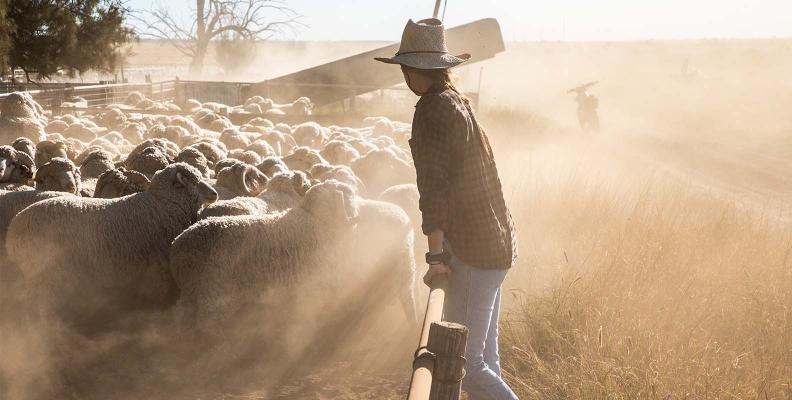

Triple combination drenches have been the backbone of healthy, productive sheep for a long time. These drenches have typically contained abamectin, levamisole and albendazole. More sheep in Australia get treated with a triple combination drench than any other type of drench1. However, new triple drenches that contain moxidectin, rather than abamectin, may risk accelerating drench resistance development. In this article, we explain why choosing an abamectin based triple drench is a better option for your go-to triple-active drench.
Persistency of an anthelmintic treatment is highly valued during times of the year when worm challenge is high and sheep have low immunity to worms. Often, they make the difference for a successful lambing or a summer rescued from barber’s pole worm. But their risk of accelerating drench resistance has long been understood.
Every time we expose parasites to an anthelmintic treatment, we are applying selection pressure to the worm population. Worms that survive the treatment are able to add their genes for resistance to the population. Drugs with persistency allow this proliferation of resistance to continue unencumbered by the reestablishment of susceptible worms. To reduce this effect, persistent drenches can be administered at the same time as drench actives from different chemical classes to remove as many adult worms as possible.
However, worms with resistance can re-establish during the period of persistency, allowing them to reach maturity and egg laying capacity earlier than susceptible worms. Just as we don’t want a neighbour’s ram to get a two week head start in our ewes, persistency gives the development of resistance a start that we don’t want. The risk of persistent drenches can be exacerbated during times when there is less refugia on pasture, for example over summer or when sheep are moved onto prepared pastures.
We can manage this risk of persistency through various exit-drench strategies when we selectively use them at key moments of the production cycle. But if we use them frequently, our ability to manage the negative effects of persistency is limited.
Triguard® Triple Combination Drench for Sheep, with abamectin, delivers the potency of the macrocyclic lactone (ML) family of drench actives, but without the persistency of moxidectin.
Ewes over the lambing period are often regularly treated due to the risk that worms pose to their health and their role in contaminating pastures for their lambs. Using a triple combination drench to treat ewes pre-lambing and, if required, again at lamb marking, is a common strategy to control worms during this period.
However, research has demonstrated that orally administrated moxidectin is carried over into the ewe’s milk and has been detected in the plasma of suckling lambs2. Moxidectin drug exposure via milk can increase the development of resistance as it has been shown to select resistant populations of worms in lambs challenged with known resistant and susceptible strains3.
While all macrocyclic lactones can be detected in milk following treatment, the exposure to suckling lambs is greatest for moxidectin because of its persistence profile and lipophilic properties. Compared to other macrocylic lactones, moxidectin in milk is detected at higher levels and for longer4, indicating that triple combination drenches with abamectin are a more appropriate drench for ewes pre-lambing or at lamb marking.
Using abamectin in the Triguard triple combination, minimises the risk of ML exposure in suckling lambs compared to moxidectin based drenches, offering a valuable tool to control worms in lambing ewes.
Triguard® has been trusted since 2010. To keep the drench working into the future, here are few things that you can do to help prevent resistance.
- Have a good quarantine induction protocol in place. Include monepantel or derquantel in your quarantine treatment along with three additional chemical classes.
- Correctly weigh your sheep and calibrate your drench guns. Drench sheep in similar size ranges to the heaviest in the mob.
- Minimize the number of drench treatments needed on farm through the use of strategic treatments and grazing management.
- Use worm egg counts to assess the need for tactical treatments.
- Only drench onto clean pastures for lambing ewes and weaners. Don’t make it a routine habit for all stock.